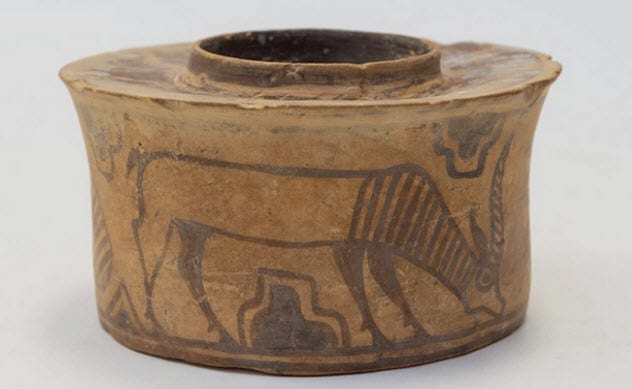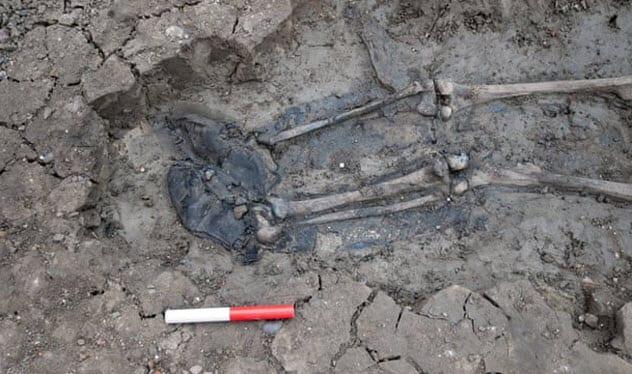 Misconceptions
Misconceptions  Misconceptions
Misconceptions  History
History 10 Amazing Roman Epitaphs
 Weird Stuff
Weird Stuff 10 Niche Subcultures That Are More Popular Than You Might Think
 Mysteries
Mysteries 10 Tragic Disappearances and Deaths in Joshua Tree National Park
 History
History 10 Ways Childhood Really Sucked in the Old West
 Music
Music 10 Name Origins of Famous Bands from the 1990s
 Religion
Religion 10 Biggest Turnarounds by the Catholic Church
 Weird Stuff
Weird Stuff 10 Unbelievable Times Laws Had Unintended Consequences
 Humans
Humans Ten Historic Women Who Deserve Way More Credit Than They Got
 Movies and TV
Movies and TV 10 Films That Spawned Major Lawsuits
 Misconceptions
Misconceptions 10 Phony Myths and Urban Legends That Just Won’t Die
 History
History 10 Amazing Roman Epitaphs
 Weird Stuff
Weird Stuff 10 Niche Subcultures That Are More Popular Than You Might Think
Who's Behind Listverse?

Jamie Frater
Head Editor
Jamie founded Listverse due to an insatiable desire to share fascinating, obscure, and bizarre facts. He has been a guest speaker on numerous national radio and television stations and is a five time published author.
More About Us Mysteries
Mysteries 10 Tragic Disappearances and Deaths in Joshua Tree National Park
 History
History 10 Ways Childhood Really Sucked in the Old West
 Music
Music 10 Name Origins of Famous Bands from the 1990s
 Religion
Religion 10 Biggest Turnarounds by the Catholic Church
 Weird Stuff
Weird Stuff 10 Unbelievable Times Laws Had Unintended Consequences
 Humans
Humans Ten Historic Women Who Deserve Way More Credit Than They Got
 Movies and TV
Movies and TV 10 Films That Spawned Major Lawsuits
10 Offbeat Stories You Might Have Missed This Week (12/8/18)
It is Saturday, which means it is time to do a quick review of the most notable stories that occurred over the last few days. Click here to check out some recent urgent matters while we focus on tales that come out of left field.
This week is a cornucopia of singular tales. They include the AI aboard the ISS, the fake first lady, the ancient plague, and the cowbell court case.
10 Don’t Be So Mean, Please

The International Space Station (ISS) saw the addition of a new member—the Crew Interactive MObile CompanioN (CIMON). It is an AI which takes the form of a floating plastic ball with a video screen face and digital voice.
CIMON was built by Airbus and uses a modified version of IBM’s Watson artificial intelligence. According to the IT company, “Project Spaceball,” as it was initially called, has “the language skills of C-3PO, the conversation abilities of Marvin, . . . the cuteness of WALL-E, and the technical know-how of HAL 9000 . . . without the evil part.”
In the future, CIMON’s role aboard the ISS will be two-fold: to help astronauts with tasks and to act as a companion. For now, it was only involved in a small test run during the 57th mission aboard the station and it went about as eerie as movies taught us to expect.
German astronaut Alexander Gerst started up the AI with the command “Wake up, Cimon,” to which the floating ball cheerily inquired how it could help. At first, things went smoothly. The two chatted for a bit. CIMON recognized Gerst’s face, helped him with an experiment, and even played some Kraftwerk.
The situation became a little awkward when the astronaut told CIMON to stop the music. The AI appeared to have misunderstood the command, and it kept talking about music.
After repeated requests from Gerst to stop, CIMON pleaded with the astronaut to “be nice, please,” also asking “don’t you like it here with me?” The AI then changed the subject, saying that Gerst was probably hungry because it could hear his stomach roaring.[1]
9 Too Much Cowbell?

There is a fiery debate going on in the tiny German town of Holzkirchen—does it have too much cowbell? A couple has sued a local farmer and the council because the farmer’s cows graze near their property and the nonstop clanging of the animals’ cowbells has caused the couple sleeplessness and depression.
The unnamed couple argues that the cowbells are too loud. Furthermore, the cows produce a lot of manure, which brings with it foul odors and lots of insects. Finally, they believe that forcing cows to wear loud bells in the flat, open countryside is not only unnecessary but amounts to animal cruelty. Modern alternatives such as GPS trackers are available.
The pro-cowbell camp argues that the trackers are too expensive and experimental. Furthermore, the cowbells are traditional and part of the local agriculture.
The original lawsuit was launched by the husband. However, the court ruled against the couple in 2017 and that decision is currently being appealed. Now the wife has filed a second lawsuit against dairy farmer Regina Killer which is expected to be heard in Munich’s regional court in January.[2]
8 Age Is Just A Number

Last month, we talked about the strange legal case of 69-year-old Emile Ratelband who petitioned the Dutch court in Arnhem to officially lower his age by 20 years. The court ruled against him on Monday, writing that allowing his request would invalidate rights and obligations based on age.
The sexagenarian believed that his age was denying him opportunities in work and love. He was particularly annoyed by the lack of responses on Tinder. He felt much younger than he actually was. Ratelband compared his situation to that of transgender people who successfully had their genders changed in the eyes of the law.
The court said in a statement that Ratelband is free to act as young as he feels. Granting his request, however, would erase 20 years of records which would come with numerous legal and societal implications.[3] Moreover, the court didn’t think the 69-year-old adequately proved that he was the victim of age discrimination and, even if he was, there were alternative solutions to changing his date of birth.
Ratelband was actually pleased with the result, saying that the rejection provided him with different angles he can use on appeal.
7 Snowloose

A young boy managed to overturn the 100-year-old ban on snowball fights in Severance, Colorado.
The law is believed to have gone into effect when the town was incorporated in 1920. It prohibits the throwing of stones and other projectiles at people or property. On a school trip with his third-grade class to town hall, nine-year-old Dane Best learned that this included snowballs. Mayor Don McLeod challenged the children to change the law if they had a problem with it, and to his surprise, Dane took him up on it.[4]
This Monday, there was a Severance Town Council meeting and Dane was there with letters and signatures in support of snowball fights. He presented his case, and the council members unanimously approved a measure to legalize the throwing of snowballs within the town limits. The mayor then presented Dane with the first legal snowball in the town’s history.
The young man already has set his next challenge. Dane plans to tackle a law that only recognizes cats and dogs as pets and limits three per household. He’s doing it on behalf of his apparently illegal guinea pig.
6 The Indus Valley Toothbrush Holder

Back in 2013, Karl Martin from Derbyshire, England, found a ceramic pot at a car boot sale (English flea market). He bought it and another pot for £4 and then used it as a toothbrush holder. Now he has found out that it was a genuine 4,000-year-old antique jar made by the Indus Valley Civilization.
Martin works as an appraiser for Hansons Auctioneers. Recently, he was helping a friend unload some objects destined for the auction block when he spotted a piece of pottery that looked familiar. It had the same kind of antelope patterns as his toothbrush holder. That’s when Martin decided to bring his pot from home to an expert. Auctioneer James Brenchley identified it as an Indus Valley artifact that was roughly 4,000 years old.[5]
How exactly an antique like that ended up at a car boot sale in South Derbyshire we’ll probably never know. Martin put it up for sale at Hansons’ November antiquities auction where it went for £80.
5 McDonald’s, Home Of The Whopper

Burger King is selling its famous Whoppers for just one penny in an effort to promote the relaunch of the company’s app and, ideally, steal some customers from McDonald’s.
The promotion is called the Whopper Detour. It only works once per customer and will be available for a limited time until December 12. But people will be able to buy a Whopper for one cent.
First, they need to install the Burger King app on their phones and then go near or inside a McDonald’s store. Once they are within 183 meters (600 ft) of a McDonald’s location, the promotion unlocks. The app will then guide them to the nearest Burger King.[6]
This isn’t the first time that the fast-food company used a stunt like this to promote itself. It also isn’t the first time that Burger King has used a marketing campaign to troll its rival.
4 Died With His Boots On

Archaeologists have found a skeleton, approximately 500 years old, on the banks of the River Thames in London. Normally, this would be a mildly interesting find but nothing extraordinary. There is something, however, that makes this discovery unique—the skeleton is still wearing a pair of boots.
The find was made by a digging team excavating a tunnel for London’s new “super sewer.” The body was lying on his front with his head moved to one side and an arm stretched above it. This suggested that the man fell in the river or was pushed rather than actually being buried.
Everything on the body has completely decayed except for a pair of leather knee-high boots which are still in remarkable condition. Their style also helped to date the body to the 1400s or early 1500s.[7]
Given the length of the boots and the location of the body, archaeologists believe that the man worked as a fisherman, mudlark, or dock worker. The boots themselves were simple and practical with no buckles or other accessories. This strengthens the idea that they were everyday work boots which doubled as waders.
Archaeologists say there is no clear indication of how the man died, although there are no obvious signs of foul play. An osteologist examined the bones and discovered that the man had suffered from extensive degenerative joint disease indicative of hard, physical labor. His teeth had grooves in them which showed that he used them to pull or hold objects for prolonged periods of time—such as how a fisherman might hold a rope, for example.
3 How To Put Your Foot In Your Mouth

On Monday, the 63rd annual Ballon d’Or ceremony took place in Paris, recognizing the best footballers in the world. It was particularly significant because the Ballon d’Or Feminin would be awarded to the best female footballer for the first time ever. That honor went to Ada Hegerberg, but the festivities were tainted somewhat when host Martin Solveig asked her to twerk onstage.
The ceremony was full of notable firsts. The inaugural Kopa Trophy was awarded to the best male player under 21. The Ballon d’Or Trophy went to someone other than Messi or Ronaldo for the first time since 2007. And, of course, Norwegian striker Ada Hegerberg, who plays for Lyon, became the first woman to receive the honor.[8]
However, after giving an inspirational speech directed at young girls, Hegerberg was joined onstage by French DJ Martin Solveig. In a celebratory mood, Solveig then asked the footballer if she knew how to twerk. Hegerberg gave a succinct “no” and motioned to walk off the stage.
Solveig faced heavy criticism on social media for his comment, including from other athletes like Andy Murray. Solveig apologized and labeled it a bad joke.
2 The Nigerian First Lady Scam

It has been a weird week for Nigeria. First, President Muhammadu Buhari had to allay people’s fears that he had died and been replaced with a clone or a body double. Then a story surfaced about a woman who posed as the first lady to allegedly run business scams out of the presidential complex.
According to the Nigerian secret service, the Department of State Security (DSS), this bizarre scandal took place in November 2017 when the real First Lady Aisha Buhari was out of the country. A woman named Amina Mohammed successfully posed as Buhari and gained entry into the presidential villa located in Abuja, the nation’s capital.
From there, Mohammed extended invitations to businessmen as if they were coming from the first lady. One man named Alexander Chika Okafor is accusing her of defrauding him of 150 million naira ($414,000).[9]
A spokesman for the DSS specified that an investigation showed that the real first lady had no knowledge of Mohammed’s “unholy enterprise.”
1 Ancient Plague Came To Europe?

A 5,000-year-old skeleton from Sweden was found to contain the genetic markers of Yersinia pestis, better known as the bacterium which causes the plague. This contradicts current thinking which said that the plague originated in Asia and made its way to Europe via trade routes.
The remains were found two decades ago in a giant limestone tomb alongside dozens of others. They belonged to a young woman who died 4,900 years ago. Geneticists were able to extract DNA from the dental pulp inside her teeth and sequence it. To their surprise, they found genetic sequences belonging to Yersinia pestis.
Based on the findings, a new study published in Cell suggests that the plague actually originated in Europe. Not only that, but it asserts that the remains are indicative of the earliest-known continent-wide epidemic.
This is supported by the fact that the woman was buried at the same time as up to 78 other people and another skeleton belonging to a young man also showed the same traces of the bacterium. Finally, the research team concluded that this strain of Yersinia pestis is different from all others and diverged 5,700 years ago.[10]
This developing story will potentially have implications on the migration history of Eurasia as well as the rise and fall of populations throughout Europe. Other scientists advise caution, though, stressing that the study of ancient pathogens is still in its early stages. There isn’t enough evidence yet to confirm that the plague swept through ancient European settlements.
Read more offbeat stories you might have missed from December 1, 2018, and November 24, 2018.








